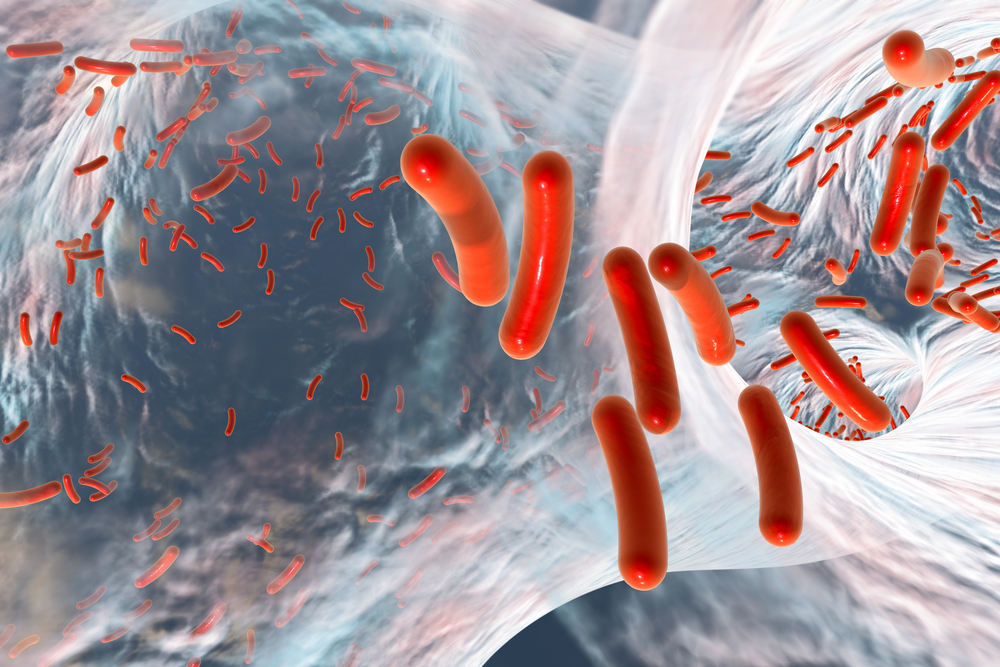$1.4M Grant Supports Combo Approach to Antibiotic-resistant Infections
Written by |

Work targeting new therapies against antibiotic-resistant infections, led by West Virginia University (WVU) researchers, received a $1.4 million grant from a branch of the U.S. Department of Defense (DOD).
The grant, awarded by the Defense Threat Reduction Agency, will be used to identify the best combinations of antibodies and antimicrobials that can kill infectious bacteria prone to antibiotic resistance, such as Pseudomonas aeruginosa which are often found in cystic fibrosis (CF) patients.
“With this project, we’re hoping to develop new ways to fight these infections or even prevent them to start with,” Mariette Barbier, PhD, lead investigator and an assistant professor at the WVU School of Medicine, said in a press release.
Aware of “how powerful our own immune systems and antibodies can be,” Barbier and her team will combine that aspect of the immune system (antibody production) with small antimicrobial molecules.
Researchers at the Massachusetts Institute of Technology and the University of Maryland are assisting in the work.
According to the World Health Organization and the Centers for Disease Control and Prevention (CDC), antibiotic resistance is one of the world’s greatest public health threats. In the U.S. alone, nearly three million people each year develop antibiotic-resistant infections, and more than 35,000 die as a result, according to the CDC.
The main drivers of this resistance are antibiotics — their overuse and misuse. Repeat antibiotic use increases the likelihood that bacteria with specific features making them resistant to an antibiotic will be selected from the general pool of existent bacteria.
Once a single bacterium survives an antibiotic, it can multiply itself into thousands of bacteria, contributing to an infection that is then almost entirely antibiotic resistant.
If the number of bacteria able to fend off antibiotics continues to grow alarmingly, as it has until now, experts predict that more people will die from these antibiotic-resistant infections (10 million) by 2050 than from cancer (8.2 million).
As such, there is an urgent unmet need for innovative approaches to fighting these infections.
The award — given by the DOD in recognition that antibiotic resistance can endanger not only public health but also national security, in the event of biological warfare — supports a project aiming to tackle both these potential threats, Barbier said.
“One of the missions of the DOD is preparedness against biological threats,” Barbier said, noting that “some bacteria are potential bioterror agents, but there are also bacteria within those same families that are responsible for causing hospital-acquired infections.”
Researchers will focus on “these species of bacteria, … casting a broad net to address potential biological threats as well as infections that afflict everyday patients,” Barbier added.
One target is Pseudomonas aeruginosa, a rod-shaped, opportunistic bacterium that commonly affects people with CF, whose disease renders them susceptible to lung infections. Chronic lung infections caused by this bacterium are also one of the leading causes of death among CF patients.
The team will also work on Burkholderia, another type of rod-shaped, opportunistic bacterium that, besides causing severe lung infections in CF patients, is considered a potential biological warfare agent that could affect livestock and people.
“The types of infections caused by these organisms are really broad,” Barbier said, adding that they can lead to respiratory infections, skin infections, bladder infections, and infections associated with surgical procedures.
Notably, these and other types of bacteria do not have preventive measures such as vaccines. To effectively fight them, Barbier’s team will employ a “search and destroy approach” that combines antibodies with antimicrobials.
Antibodies are immune proteins that seek out and bind to specific molecules at the surface of foreign microorganisms, promoting immune reactions against them. Antimicrobials, such as antibiotics, are molecules that kill or slow the spread of microorganisms.
Developing this dual approach is expensive and challenging, and screening for the most effective antibody-antimicrobial combination in a lab can take months.
To save both time and resources, the researchers will use machine-learning, a form of artificial intelligence that uses algorithms to analyze data, learn from its analyses, and then predict likely outcomes.
Machine learning will allow the team to screen billions of molecules in a few hours using a super computer, Barbier said.
“Using artificial intelligence and machine learning will allow us to make reiterative calculations in order to predict whether compounds could have potential therapeutic effects,” said Slawomir Lukomski, PhD, an associated professor at the WVU School of Medicine and a team scientist.
Barbier believes the work will not only help address current problems, but also future ones.
“We’re also looking at the future in terms of making predictions as to what treatment could be efficacious to help us fight the next bacterial pandemic,” she added.






